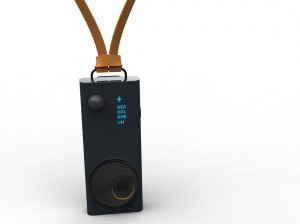Why are there so many different types of wearables and smartwatches?
If you follow the wearable market closely, then you already know the answer to these questions. If you’re new to the concept, then it’s probably one of the first things you’ll want to know.
Smartwatches and wearables are different in many ways, although they are both worn — commonly on the wrist. In some cases, they can be similar but in others they are not. For example, the Apple Watch — which is a smartwatch — can track fitness data like calories burned or steps taken, just like a wearable fitness tracker such as a Fitbit.
At the end of the day, however, they are two completely different terms.
For someone that’s not familiar with technology, what makes them inherently different? Better yet, how many different types of wearables are there? We’re going to explore these questions to help you better understand the industry.
If you don’t know much about wearables, smartwatches or electronics in general then you’ve come to the right place!
What Is the Difference Between a Wearable and a Smartwatch?
For all intents and purposes, a smartwatch is one type of wearable device. Think of the term “wearables” as a category, whereas smartwatches are just one type of device in that category.
 Just as the term implies, “wearable” typically refers to a device that you wear on your person at all times. These devices can be worn on the wrist, on your belt or waist, on your head or eyes or even around your neck.
Just as the term implies, “wearable” typically refers to a device that you wear on your person at all times. These devices can be worn on the wrist, on your belt or waist, on your head or eyes or even around your neck.
A wearable is nothing more than a device you wear. They are adorned as a form of clothing or accessory, sometimes even just for fashion or looks as opposed to function.
Smartwatches are just one type of wearable, but there are many others. There are fitness trackers, headsets and glasses, contact lenses, e-textiles or smart fabrics, headwear and caps, jewelry and more.
“Wearables are generally designed to solve some kind of problem or improve convenience.”
The wearable space is really taking off right now. It’s possible that eventually a piece of technology will come along and replace every piece of clothing you wear. Smart hats, smart socks, smart underwear, you name it. As crazy as it sounds, there are tons of wearables like this already. Some serve as nothing more than concepts while others are actual retail products.
Some popular wearables include:
- Smartwatches — wrist watches with “smart” mobile phone like capabilities
- AR and VR Tech — virtual reality based headwear that merges the real world with a digital one
- Smart Clothing — high tech fabric designed to be “smart,” usually for measuring personal health
- Fitness Trackers — wearables designed to track fitness and health stats like calories burned, heart-rate and more
Why Would Anyone Want to Wear a Piece of Technology or Gadget?
As with any technology, wearables are generally designed to solve a problem or improve convenience.
Smartwatches, for instance, make using a smartphone much more convenient. When the two devices are paired up you can receive mobile notifications and messages right on your watch, allowing you to leave the phone in your pocket or elsewhere. This may seem silly on paper, but when you actually get a chance to use the two devices in tandem you realize how practical it all is. If you’re one to peek at your phone every so often while you’re at dinner, visiting friends and family or at the movies — a smartwatch will have a lot of value to you.
Fitness trackers, on the other hand, have been designed to allow those with an active lifestyle to track their progress and set personal goals. It’s always been important for runners, bodybuilders and even swimmers to know how many calories they burn during a workout. The trackers athletes use can monitor stats in real-time and read them back.
Augmented reality glasses — like Google Glass — allow people to merge their daily life and activities with information from the digital world. While wearing them, users receive up-to-date information about the world around them. For instance, they can see GPS directions displayed over real world streets, and they can be shown images and videos of experiences they had at a particular location or establishment. All of it is shown in front of their peripheral vision too since Google Glass is essentially a pair of glasses. There’s no need for Glass users to take out a phone, or small display because there’s one built-in to the headset.
As modern technology becomes more ingrained in our daily lives it will evolve to become a part of us. In a sense, wearables are the next step in the tech evolution chain — aside from installing cybernetic implants into our bodies. We’ll save that topic for another time.
Are Wearables Dangerous?
We’ve explored the idea before that smartwatches are more dangerous for drivers than smartphones. Because of that, we don’t recommend interacting with a smartwatch while you’re driving. That’s kind of a no-brainer though.
There’s also the question of privacy and personal data. Wearable devices are often designed to collect and aggregate a lot of personal information about the wearer. It’s certainly possible for this information to fall into the wrong hands and be used in a detrimental way.
You have to judge the risk and rewards on a more personal level. Are the benefits you receive from using a wearable or smartwatch greater than the risks? If the answer is no, then don’t use them.
Then, there’s the matter of being responsible. Alcohol on its own is not dangerous. However, it can become an extremely dangerous substance when not used in moderation and at the wrong times — read: drunk driving. The same holds true for wearables and smartwatches.
What Can Wearables Be Used for?
 You name it! Wearables exist for just about anything, like tracking fitness data, keeping in touch with loved ones while traveling, monitoring your kids or pets through GPS, documenting your daily life and much more.
You name it! Wearables exist for just about anything, like tracking fitness data, keeping in touch with loved ones while traveling, monitoring your kids or pets through GPS, documenting your daily life and much more.
“A wearable is nothing more than a device you wear.”
One lesser known type of wearable — called Lifeloggers — will help you document a personal event or daily habits. They’re designed to snap quick photos throughout the day — while they’re powered on — which you can refer to later. They are absolutely terrific for capturing photos of things like family reunions, or weddings.
I Think I Want One
Great! Welcome to the family! First decide what it is you would like your wearable to do, and then go from there. Do you want a smartwatch that augments the use of your smartphone? Would you rather own a fitness tracker to count how many steps you take a day? Do you want
First, take a moment to decide what you would like your wearable to do, and go from there. Do you want a smartwatch that allows you to leave your smartphone at home? Would you rather own a fitness tracker that can count how many steps you take per day? Do you want a smart shoe that can monitor your posture and let you know why your back hurts so much?
None of these scenarios are preposterous or made up. It’s just a matter of choosing what you want. If you’d like to know more about smartwatches specifically, we have tons of information available.

